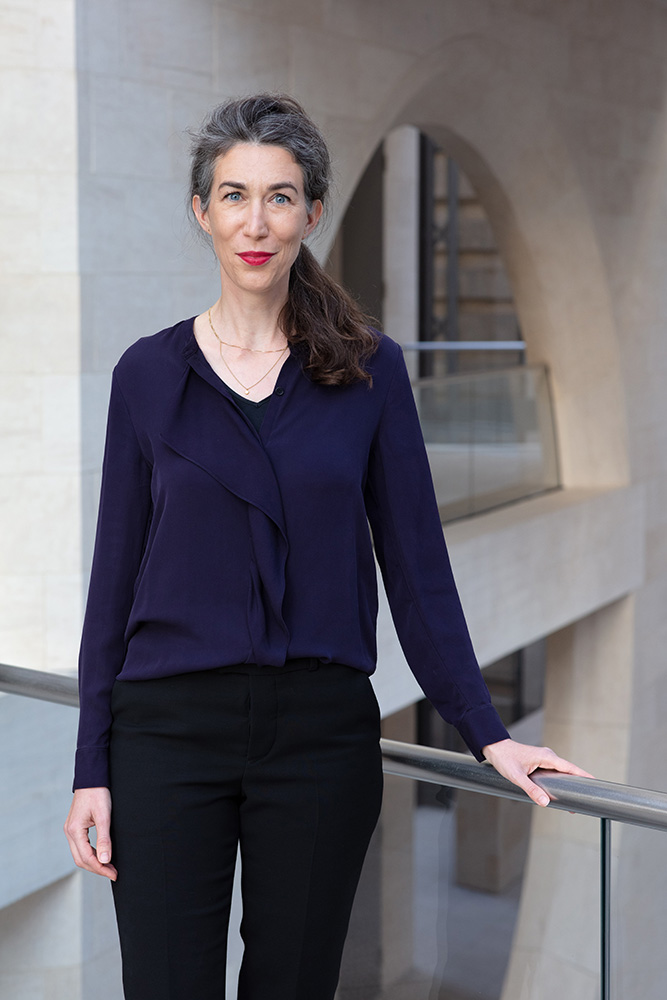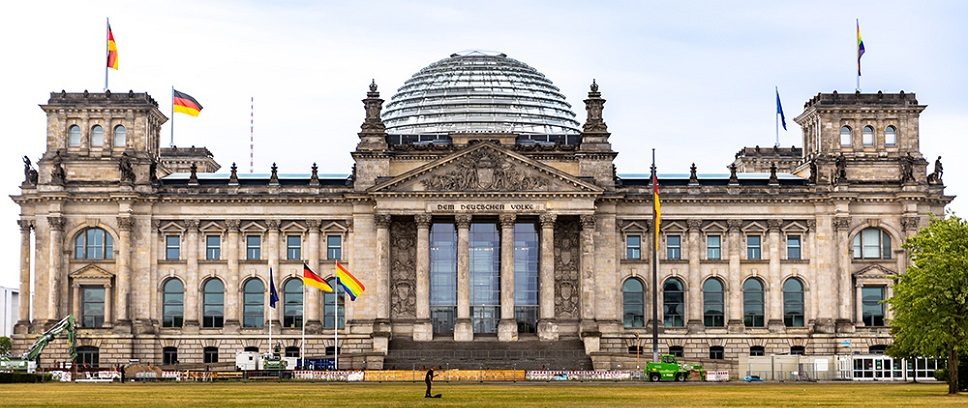
What’s that for? The first rainbow flag on the Reichstag
Julia Franke | 21 July 2023
Red, orange, yellow, green, blue, violet: in 2022 the German Bundestag flew the rainbow flag for the first time in the history of the parliamentary building. A year later, in the framework of an official presentation of this object by the president of the German Bundestag, Bärbel Bas, to the president of the Deutsches Historisches Museum, Raphael Gross, the 4.5 x 7 metre flag found its way into the museum’s collection “Civilian Dress and Textiles”. Julia Franke, head of the collection, tells us what it is all about.
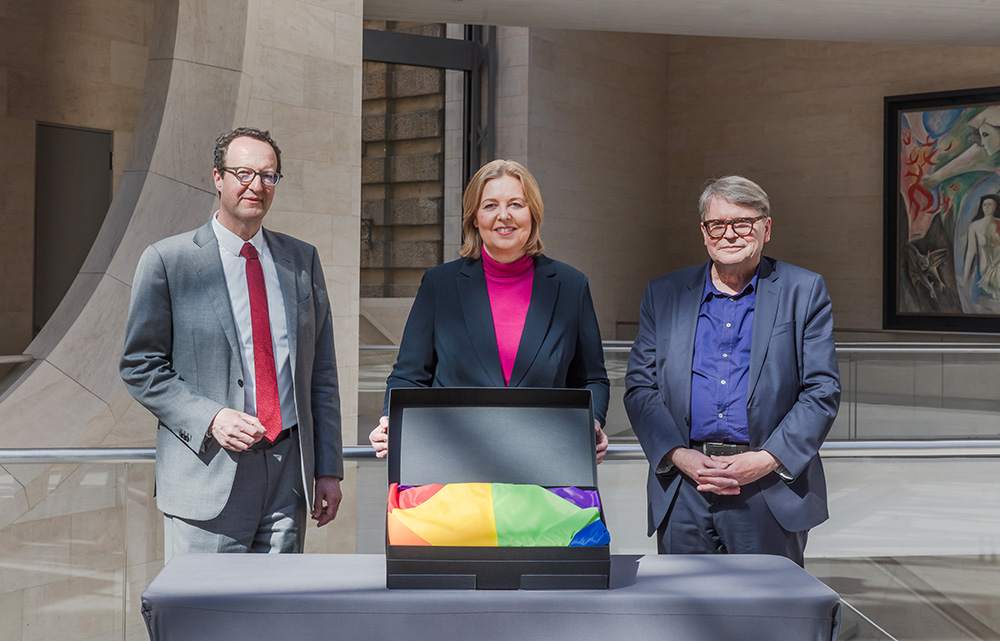
On the occasion of Christopher Street Day (CSD) on 23 July 2022, the colours of the rainbow flew on top and in front of the Reichstag Building, the seat of the German Bundestag, for the first time. CSD is an annual event recalling the violent razzia in 1969 by the New York City Police at the Stonewall Inn, a bar frequented mainly by a queer clientele. In recollection of the upheaval and protest against police violence in downtown Christopher Street, the so-called Stonewall Riots, pride events first took place in the Federal Republic of Germany in 1979. Today CSD is a very visible day of celebration and of protest for the rights of gay, lesbian, transsexual and transgender, inter- and bisexual people that takes place every year in many different cities.
By hoisting the rainbow flag in 2022, the German Bundestag wanted to express its solidarity with people who are discriminated against due to their sexual identity and at the same time to take a stand for the acceptance and protection of this diversity and against homophobia and hostility towards the queer community. The flag, more than 30 square metres in size, was raised on the southwest tower of the Reichstag Building, on the side aligned in the direction of the CSD parade. Two much smaller rainbow flags also adorned the east and west portals of the Reichstag. According to the official flag ceremony, flags normally fly from sunrise to sundown. Because the closing rally at the Brandenburg Gate on 22 July 2022 continued on into the late evening, the rainbow colours flew until midnight.
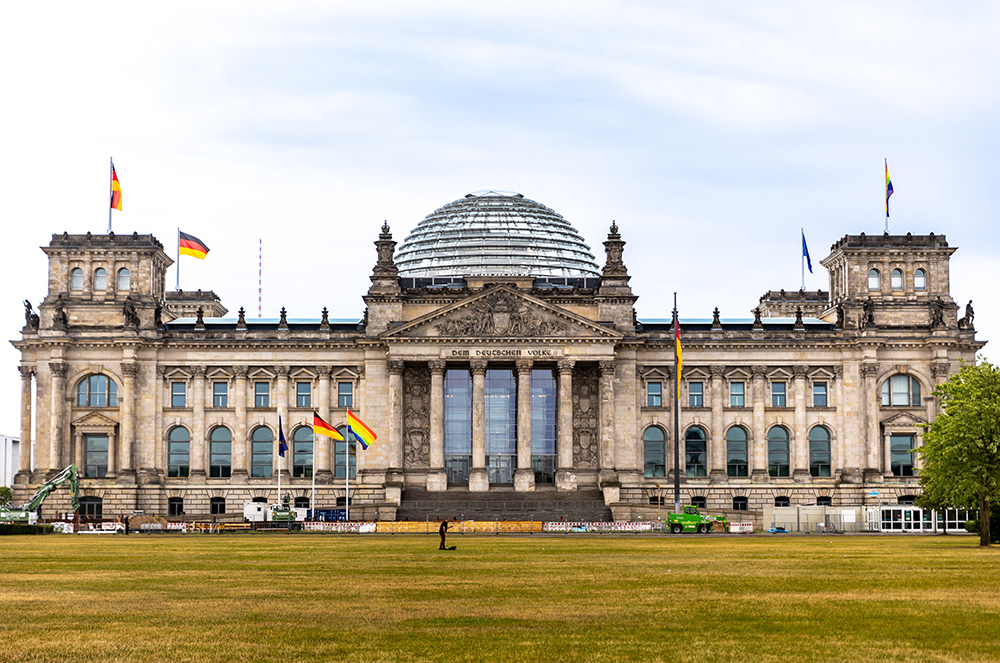
Key symbol of queer self-awareness
Symbols and signs are among the most important instruments of political protests. The rainbow, whose symbolic history goes back to the Old Testament, is understood today in international circles as a sign of tolerance and the acceptance of sexual and social diversity – with the exception of such states as Saudi Arabia, Russia and Iran, which have officially prohibited any display of this symbol of queer self-affirmation.
The American artist Gilbert Baker (1951–2017) is considered the inventor of the rainbow flag, which in the course of the following decades was to become the symbol of the international queer community. In 1978 he carried a self-made rainbow flag for the first time at the Gay Freedom Parade in San Francisco. According to its inventor, the flag should not only represent the gay movement, but “sexual otherness” in general, i.e. all bodies, identities and every kind of desire, which the American philosopher Judith Butler defines as heterosexual matrix.
Gilbert Baker assigned a special significance to each of the eight colours he used in the flag. Unlike the banner of the peace movement, which often bears the inscription “PACE” (Engl. peace) and begins with the blue colour spectrum, Baker’s original colour sequence started with a strident pink, which for him stood for sexuality, followed by the colour red symbolising life, orange for healing and health, yellow for sunlight, green for nature, turquoise for the arts, the darker blue colour for peace and harmony, and violet for the spirit. In the 21st century, the flag with six stripes (now without pink and turquoise) has become generally accepted internationally as the recognisable symbol of the history of the queer movement. Its clear design, high recognisability, and easy graphic reproducibility have contributed to the success of the symbol. In the course of its existence, the design of the rainbow flag has continued to take on new forms. In order to include as many identities and previously marginalised perspectives as possible, the design of the flag has been expanded to include new colours and symbolic elements, particularly in the last five years. What is probably the most current version of the flag is a redesign of the Progress Pride Flag with the addition of an inclusive intersex variation.
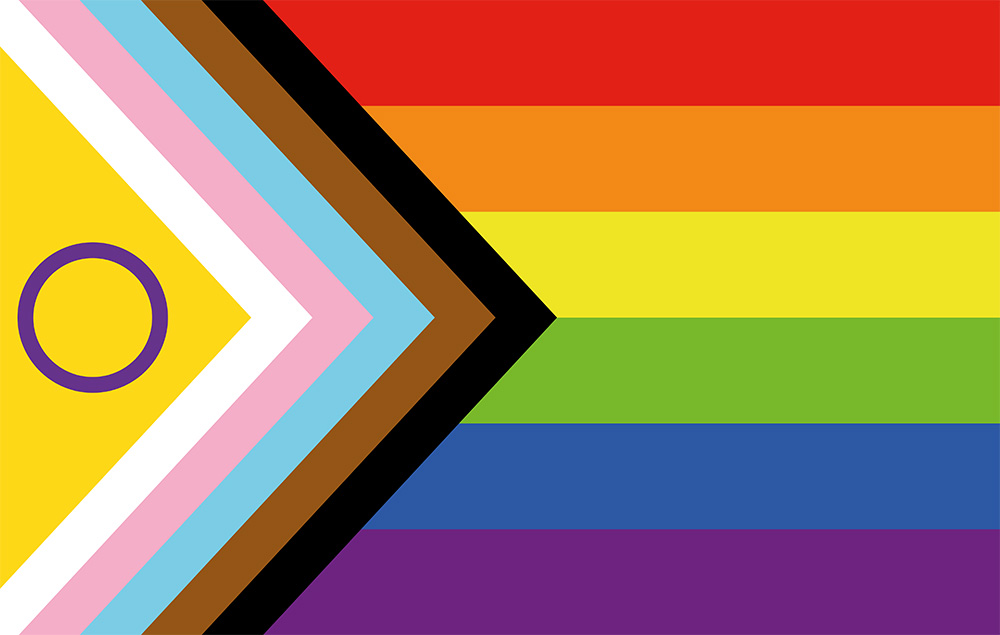
Flag ceremony and the rainbow
On the initiative of the “Lebens- und Schwulenverband Berlin-Brandenburg” (LSVD, Life and Gay Association of Berlin-Brandenburg), three Berlin districts raised the rainbow flag on official buildings in 1996 for the first time in Germany. Almost 20 years later, the Berlin House of Deputies, seat of the Berlin state parliament, raised the rainbow flag for the first time – on 27 June 2015, on the occasion of that year’s Christopher Street Day as a signal “for the equal social standing of lesbians and gays” and against “intolerance and homophobia”.
Before this non-official symbol was flown nationwide, the constitutional bodies – Federal President, German Bundestag, Federal Government, Bundesrat (Federal Assembly), Federal Constitutional Court – for years had already been considering the possibility of visibly displaying the rainbow flag in the public sphere. However, each constitutional body decides on its own about hoisting flags. For such buildings as the Reichstag the decision is taken according to specific regulations. It was only possible to fly the flag on the southwest tower in July 2022 through a change in the flag flying enactment of the Federal Government initiated by the responsible Federal Minister of the Interior and Community, Nancy Faeser. The President of the Bundestag, Bärbel Bas, lent her support and recommended the Presidium and Council of Elders of the German Bundestag to fly the flag. From now on it is possible to set an example for queer visibility and emancipation on such a specific date and occasion as Christopher Street Day.
|
© DHM/Thomas Bruns |
Julia FrankeJulia Franke is head of the collection for Everyday Culture (Civilian Dress and Textiles) at the Deutsches Historisches Museum. |
